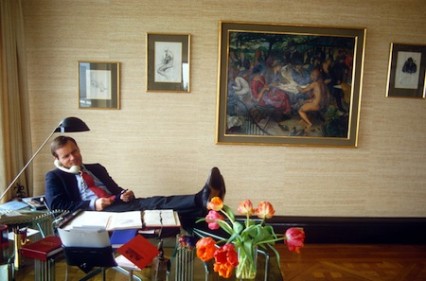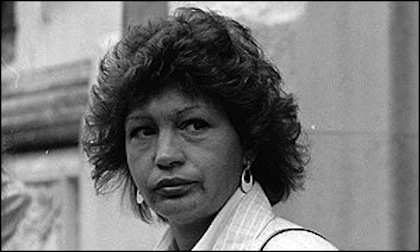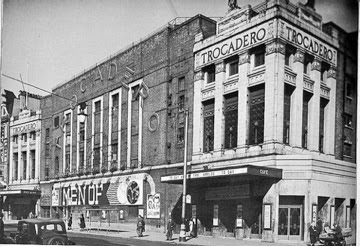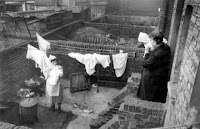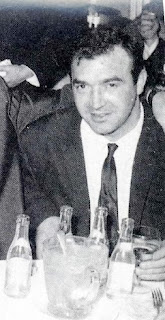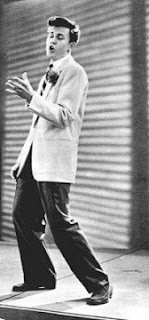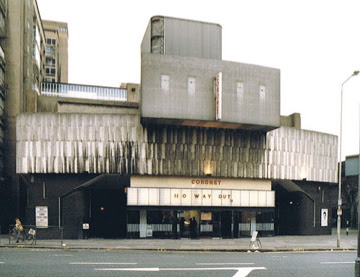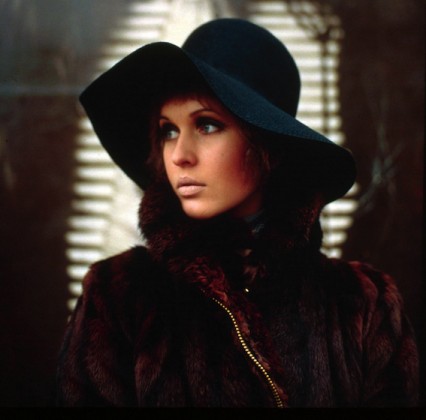
Julie Driscoll in 1968
Years ago my neighbour Fred once said to me ‘Julie Driscoll used to live just down the road you know’, his eyes sort of glazed over and he wistfully sighed ‘Ah, Jools…’. I’d heard of her but I wasn’t entirely sure where or why, but went and bought a couple of her CDs all the same. Fred had done me a favour because Julie Driscoll made some really good music – her most famous track being a cover of Bob Dylan’s Wheels On Fire when she was part of The Brian Augur Trinity which was subsequently used as the theme music for Absolutely Fabulous.
She was one of the faces of the sixties with short cropped hair, bewitching eyes and was described as ‘the coolest of the cool’ and ‘The Face’ by the contemporary music press.
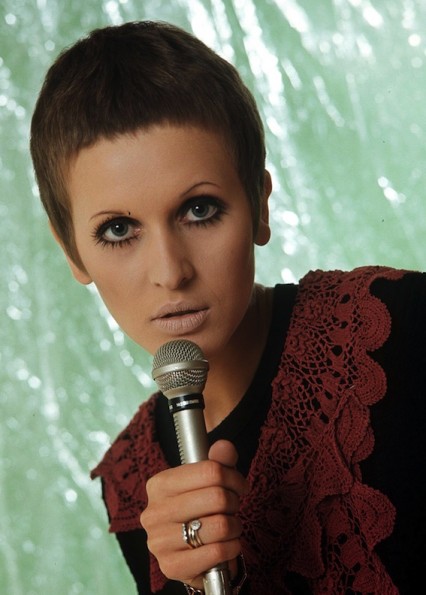
In 1969 she recorded her first solo album called 1969 (it was actually released a couple of years later) and included on the collection was a weird, but in my opinion a rather fantastic track called Vauxhall to Lambeth Bridge – which would be a short walk of about half a mile between two adjacent bridges that span the river Thames.
It’s actually a journey, being rather local, that I’ve made in one form or other hundreds of times. The south bank of the Thames here is known as the Albert Embankment and was built on reclaimed land from the river by Joseph Bazalgette, the man famous in London for being responsible for building London’s sewer system in the mid-19th century, most of which still exists to the present day.
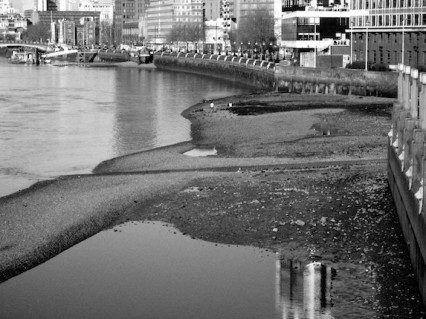
View from Vauxhall Bridge, 2008
If you can get past the bit in the song where Big Ben is winking and smiling at Julie (it was the sixties after all), the song is about an evening walk along the riverside where she meets a man looking into the dark and black water of the Thames searching for something in the impenetrable depths – presumably, I suppose, searching for the meaning of life and not his watch or whatever. I’m not sure if Jools ever wanders down the same bit of river these days, I hope so, because if she does she probably sees me doing the same thing from time to time.
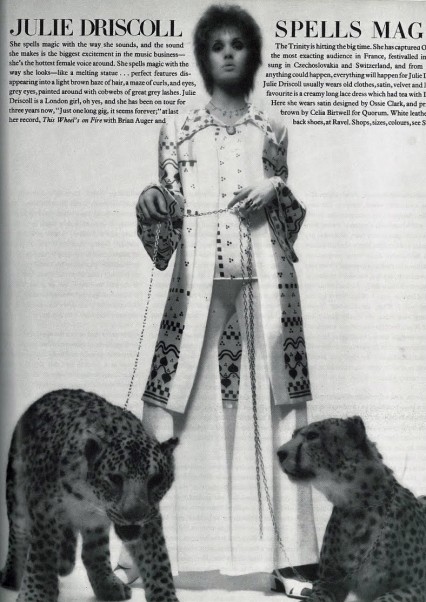
Julie in Vogue with a couple of pet cats, 1968
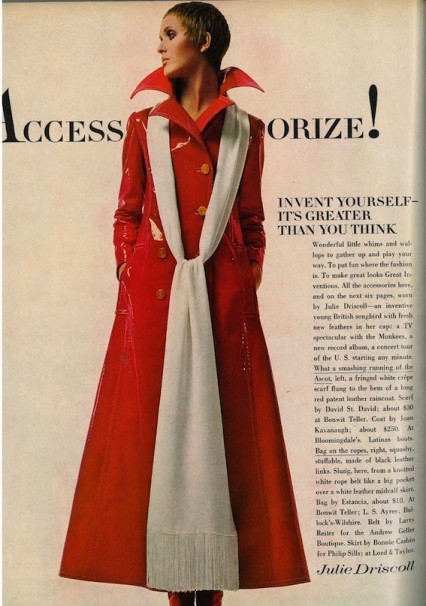
Vogue 1969
Julie, in the early sixties was working with the Yardbirds fan club when she was encouraged by the band’s then manager, Georgio Gomelsky, to try singing as a career. In 1963 at the age of 16 she released her first single , ‘Take Me By The Hand’ and in two years she was singing with a rhythm and blues group called Steam Packet which included Long John Baldry, Rod Stewart and and Brian Augur – the band was a sort of precursor of the late sixties supergroups. Well, it would have been if all the members weren’t complete unknowns at the time.
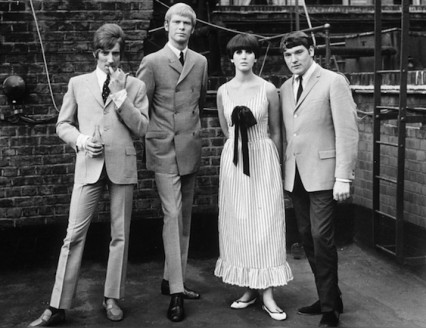
Rod, Long John Baldry, Julie and Brian Auger
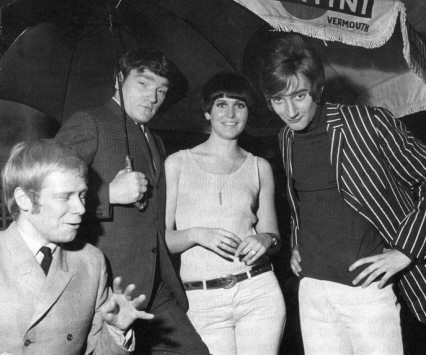
Steampacket
Eventually, Rod Stewart and Long John Baldry went off to try and be famous, with various degrees of success, and Julie continued singing with organist Brian and his Brian Auger Trinity. In 1968 they had a top five hit with Bob Dylan’s ‘This Wheel’s On Fire’. It remained their and Julie’s biggest hit although they released several fantastic singles including Donovan’s Season Of The Witch.
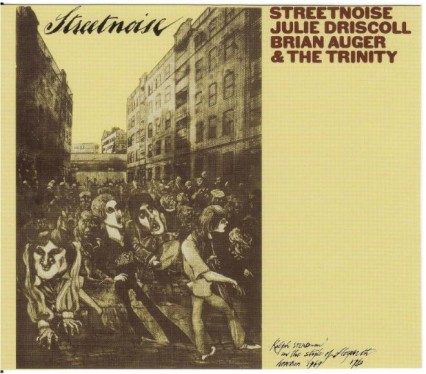
Streetnoise, the album that features Vauxhall to Albert Bridge.
Julie, is still performing, singing slightly more avant-garde material these days, and is now known as Julie Tippetts married to the jazz musician Keith Tippet who played on Streetnoise – the 1969 album on which Vauxhall To Lambeth Bridge is featured.
This time not with Julie but too good not to put up here. This promo ‘video’ of the Brian Auger Trinity was ridiculously ahead of its time.
Buy Julie Driscoll, Brian Auger & The Trinity stuff here and here
(Communique No. 9, following the bombing of Tintagel House)
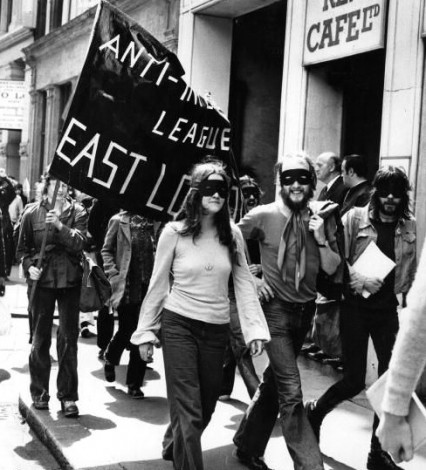
The Angry Brigade
The Angry Brigade is the man or woman sitting next to you.
They have guns in their pockets and hatred in their minds.
We are getting closer…
Power to the People.
America had the Weather Men, Italy the Red Brigades, Japan the Red Army Fraction, Germany the Baader-Meinhof gang but here in the UK we had the Angry Brigade. Today though, Britain’s first urban guerilla group have almost been forgotten – even their name seems a sort of pythonesque joke. Yet this disparate group of anarchists managed over about three years to explode 25 bombs between 1968 and 22 May 1971. The targets included senior policemen and politicians, a Territorial Army drill hall but also the less obvious Biba – the fashionable swinging London boutique which the Angry Brigade, rather a head of time, saw as exploiting sweatshop labour.
The Angry Brigade, with better luck than judgement, caused no fatalities, although someone once got slightly hurt, and the damage they caused was pretty minimal. Nonetheless the establishment were panicked due to the lack of evidence they could find on the initially nameless terrorists. Evidence of a sort at last arrived after the first ‘communique’ was issued by the Angries. It followed a bomb at the police commissioner Sir John Waldron’s home in August 1970. It was signed Butch Cassidy and The Sundance Kid.
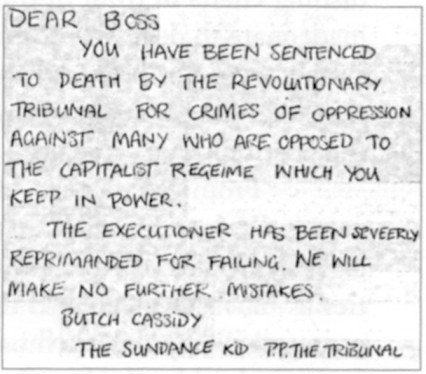
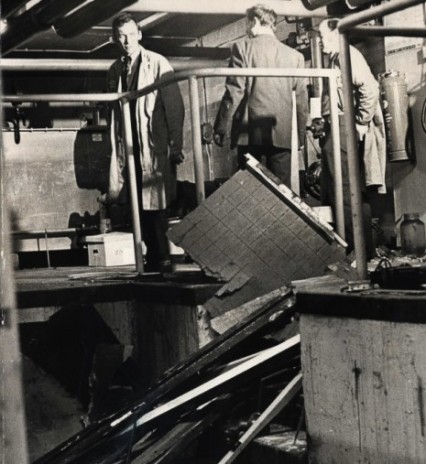
bomb at Gant's Hill
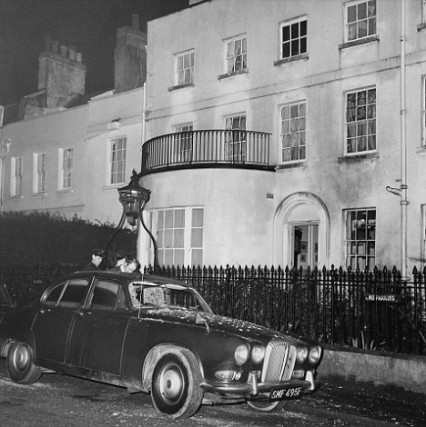
The aftermath of the bomb at the minister's house
The next communique stayed in the wild west and was signed ‘the Wild Bunch’. However on 12 January 1971, Robert Carr, the Tory secretary of state for employment and productivity, was the target and the subsequent communique’s signature was stamped with a children’s John Bull printing kit and read ‘The Angry Brigade’. It was a title grabbed gleefully by the popular press and it became the name the anarchic urban guerilla group were to be forever known.
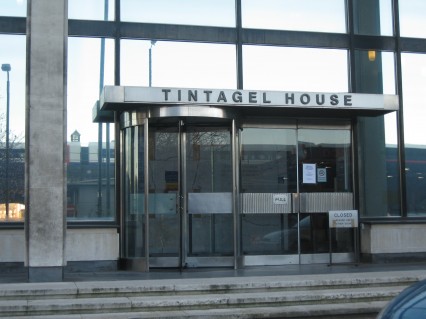
Tintagel House on the Thames south bank
The bomb at Tintagel house (a Metropolitan Police office block), just down from Vauxhall Bridge and a couple of buildings away from where is now the rather over-the-top MI6 building (officially known just as 85 Vauxhall Cross), was aimed at the police computer – a ‘state of the art’ UK designed ICT 1301 mainframe. As usual the explosion caused minimal damage and even though the computer was size of a house it seemingly could do nothing but add two and two together anyway.
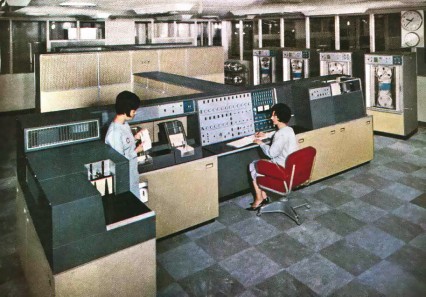
1301 mainframe Computer
The computer in question was completely British and was built jointly by GEC Telephones of Coventry and the British Tabulating Machine company who held all the rights to IBM technology throughout the British commonwealth. However, and with hindsight not exactly sensibly, they decided to give up these rights and build the 1301 in competition with IBM – then the Microsoft (sort of) of the day. The biggest selling point of the ICT 1301 was that it could add and subtract pounds shillings and pence, and to be able to multiply sterling amounts by decimal numbers.
The computer was about 20 ft wide and 22 ft long, weighed five tons, and had an internal memory of about 72 kilobytes (a Word document a few pages long). Each of the Ampex 1″ tape units in the background on the right could store about 9 megabytes of memory (about a couple of mp3s).
A few months after the Tintagel House bombing the police raided a house in Stoke Newington finding various explosives, ammunition and guns but most damning of all a John Bull printing kit. Gradually eight supposed members of The Angry Brigade were arrested, subsequently becoming known, rather imaginatively by the press, as the ‘Stoke Newington Eight’.
The Angry Brigade’s campaign came to a definite end after the longest criminal trial in English history (it lasted from May 30 to December 6 1972) was concluded with John Barker, Jim Greenfield, Hilary Creek and Anna Mendleson each receiving prison sentences of ten years. Other defendants, however, were found not guilty including Stuart Christie, who had formerly been imprisoned in Spain for carrying explosives with the intent to assassinate the dictator Franco, and Angela Mason, who went on to become the director of Stonewall and the Government’s Women and Equality Unit and who was awarded an OBE in 1999.
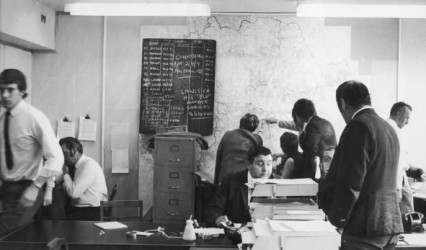
London' s finest at Tintagel House on the Albert Embankment in 1971
Cold, Unloving, Rubber-Insulated Sex
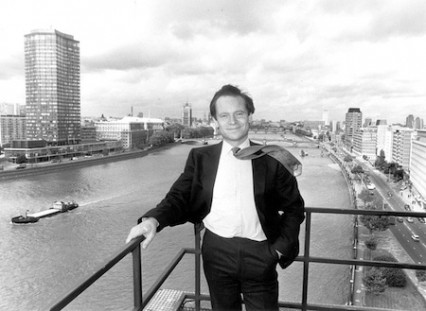
Jeffrey atop of his penthouse apartment on the Albert Embankment
Next door to Tintagel House is a rather nondescript sixties tower block called Peninsula Heights but formerly known as Alembic House. Jeffrey Archer owns the penthouse at the top of the building and it was here that he held his infamous shepherd’s pie and Krug parties. The apartment was formerly owned by Bernie Eccleston, the Formula One baron and before that John Barry the James Bond theme composer and a host of other fantastic pieces of music.
Apparently Peter Stringfellow has the flat downstairs. It was also the groovy sixties location when the plans were organised for the Italian Job and it also featured in Sweeney! – the feature film version of the famous television series.
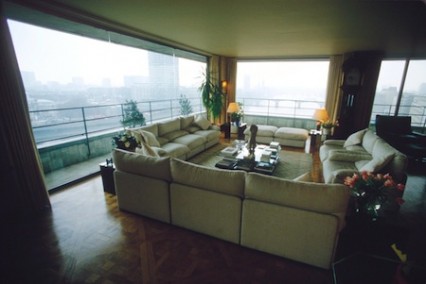
Interior of Jeffrey's penthouse suite
The journalist Deborah Orr visited Archer’s apartment just before his trial in 2001 and described it as having “no bookshelves in the living room, as all the available wall space is given over to Lord Archer’s much written about collection of art. This was dismissed airily by one of his acquaintances as ‘All the right names, all the wrong pieces’…But there are bookshelves upstairs, which at a glimpse can be seen to hold books not spine out but front out. The books, from this limited perspective, all seem to be Jeffrey Archer hardbacks.
Most disconcerting… is the preponderance of heavy, gilded, Empire furniture around the place. The general effect is that Frasier has been forced to sub-let to a minor but wealthy admirer of the Third Reich.”
Remember Mary Archer in the witness-box. Your vision of her probably will never disappear. Has she elegance? Has she fragrance? Would she have, without the strain of this trial, radiance?
I had no difficulty seeing his face. I was lying on top of him the whole time. He commented on how lovely I was. He was quite surprised by my nipples. It was over very quickly – about 10 minutes, what with getting undressed and the actual sex. Because it was over so quickly, I suggested that he relax for a while and he could try again. I lit a cigarette and I laid down on the bed with him. I asked him what he did for a living. He said, ‘I sell cars,’ and he had no sooner said that than he jumped off the bed and said he should go and move his car.
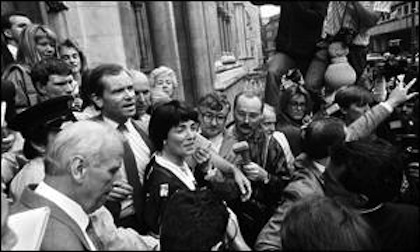
Jeffrey and Mary outside court
On 19 July 2001 Archer’s former friend Ted Francis told the News Of The World that he supplied a false alibi for Archer at the time of the 1987 trial and Archer was subsequently tried and found guilty of perjury and perverting the course of justice. To the sound of cheering throughout the land he was sentenced to four years in jail.
Monica Coghlan died a week before her 50th birthday when she was involved in a bizarre hit and run accident by a man who had just robbed a nearby pharmacy. Before she died she told the press:
Jeffrey Archer took everything away from me, I lost my home, my dignity, my self-respect and any hope of the future. While I was scrimping and scraping, he was clawing his way back to power and lording it up in his manor house. It just wasn’t fair, simple as that.” She also added “I have never denied what I was. I was a prostitute.
